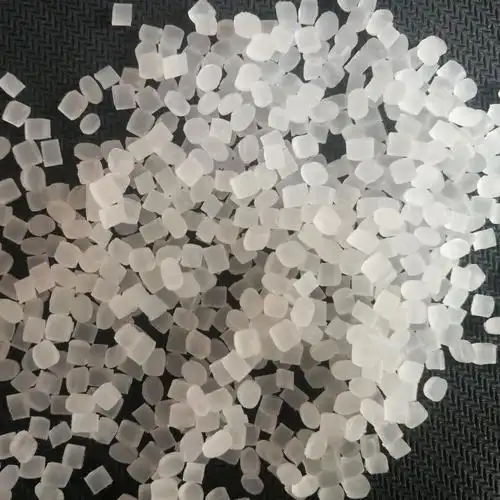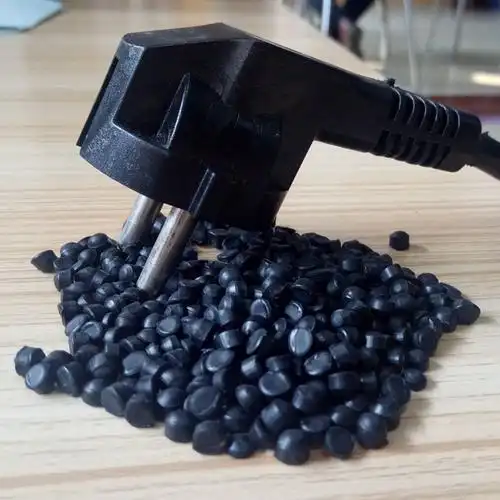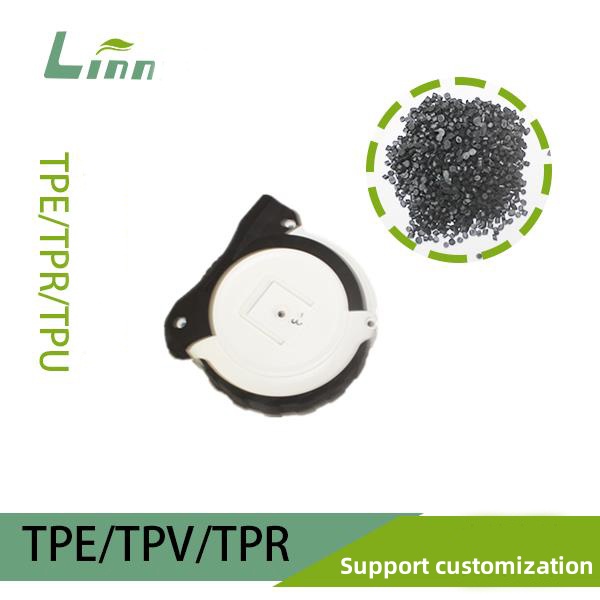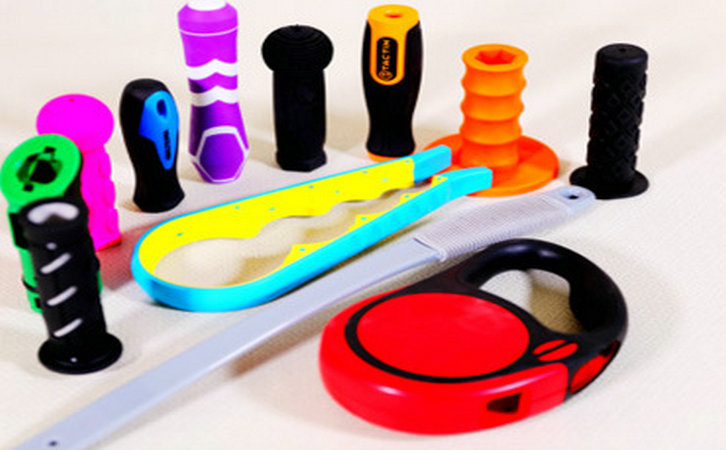As someone who’s been immersed in the plastics and elastomer industry for nearly fifteen years, I’ve watched materials like TPR (Thermoplastic Rubber) ebb and flow in both popularity and price. Lately, I’ve noticed a surge in questions about whether TPR prices have dropped, especially from manufacturers, procurement specialists, and small business owners looking to manage costs. It’s a question that hits home for anyone sourcing materials for products like shoe soles, automotive parts, or consumer goods. Having worked closely with suppliers, tested TPR in various applications, and tracked market trends, I’m here to break down the current state of TPR pricing, what’s driving it, and what you can expect moving forward. Let’s dive into the details with a human touch, grounded in real-world experience.

What Is TPR, and Why Does Its Price Matter?
Before we get into the nitty-gritty of pricing, let’s set the stage. TPR is a unique material that blends the stretchy, resilient qualities of rubber with the moldability of plastics. It’s a go-to for industries like footwear, automotive, and medical devices because it’s flexible, durable, and recyclable. I’ve seen TPR used in everything from grippy tool handles to soft-touch phone cases, and its versatility makes it a staple in manufacturing.
Price matters because TPR is often a significant cost driver in production. If you’re a small business making yoga mats or a large manufacturer producing car seals, even a small shift in TPR prices can impact your bottom line. Over the years, I’ve helped clients navigate price fluctuations to keep their products competitive, so I understand the stakes. The question is: have TPR prices actually gone down recently, or are we still caught in the ups and downs of the market?
The Big Picture: TPR Price Trends in Recent Years
To answer whether TPR prices have decreased, we need to look at the broader market trends. Based on my experience and industry reports, TPR prices are influenced by several factors: raw material costs (like styrene and butadiene), global supply chains, demand from key industries, and economic conditions. Let’s take a closer look at how these have played out from 2022 to mid-2025.
2022–2023: A Rollercoaster of Costs
Back in 2022, TPR prices were on a wild ride. I remember working with a client who was sourcing TPR for shoe soles, and they were hit hard by price spikes. The cost of feedstocks like styrene and butadiene surged due to supply chain disruptions from the lingering effects of COVID-19 and geopolitical tensions, particularly in Europe and Asia. For example, styrene prices were volatile, with some reports noting a 10–15% increase in Q3 2022 due to reduced production and high energy costs. TPR prices followed suit, with costs ranging from $1,470 to $2,250 per metric ton, depending on the formulation and region.
In 2023, things didn’t stabilize much. The global TPR market was valued at around $18 billion, with projections estimating growth to $28 billion by 2032 at a CAGR of 5.1%. But growth doesn’t always mean lower prices. Demand from the automotive sector, especially for electric vehicles (EVs), kept TPR in high demand for lightweight components. At the same time, raw material scarcity and high energy costs in Europe pushed prices up, particularly in Germany, where I saw quotes for TPR climb by about 8% in the first half of 2023.

2024: Signs of Softening?
By 2024, the picture started to shift. In my conversations with suppliers, I noticed a trend toward stabilization and, in some cases, slight price decreases. Here’s why:
Oversupply in Asia: In China, the largest TPR market, production rates remained high, with styrene inventories reaching 31,900 tons by December 2024. This oversupply led to a marginal 0.5% price drop in Q4 2024 across the Asia-Pacific region.
Weak Export Demand: While domestic demand in China was buoyed by a 12% year-on-year increase in passenger vehicle sales, export markets like Vietnam and Malaysia saw weaker demand, putting downward pressure on prices.
Stable Feedstock Costs: Feedstock materials like ethylene and styrene saw fluctuating but generally stable prices in 2024, reducing the cost pressure on TPR manufacturers. For instance, polypropylene, a common TPR component, experienced a steep decline in Asia due to high inventories and sluggish demand.
In my own projects, I saw TPR quotes for specific applications (like injection-molded grips) drop by about 3–5% in Q3 2024 compared to the previous year. However, these reductions weren’t universal—high-performance TPR grades for medical or automotive use remained pricier due to specialized formulations.
2025 So Far: A Mixed Bag
As of mid-2025, TPR prices have shown signs of softening but not a dramatic decline. Industry data indicates that TPR prices in the U.S. rose by 3% in Q3 2024 compared to Q2, driven by higher ethylene costs and supply chain hiccups. In contrast, Asia saw continued downward pressure, with prices holding steady or dipping slightly due to abundant supply. For example, polypropylene, often blended with TPR, was priced at 7,089 CNY/ton in July 2025, up slightly from the previous month but down 8.52% year-on-year.
From my perspective, working with suppliers in both Asia and North America, I’ve seen average TPR prices hover between $1,400 and $2,100 per metric ton in 2025, depending on the grade and region. This is slightly lower than the 2022 peak but not a significant drop. Specialty TPRs, like those used in medical devices, can still command premiums up to $2,500/ton.
What’s Driving TPR Prices?
To understand whether prices are truly decreasing, let’s unpack the key factors at play. Over the years, I’ve learned that TPR pricing is a complex dance of supply, demand, and external pressures. Here are the main drivers I’ve observed:
Raw Material Costs: TPR is typically made from styrene-butadiene-styrene (SBS) or styrene-ethylene-butylene-styrene (SEBS), blended with additives like polypropylene or mineral oils. When styrene or ethylene prices rise, TPR follows. In 2024, ethylene costs in North America increased, pushing TPR prices up slightly, while Asia’s oversupply of styrene kept prices in check.
Demand from Key Industries: The automotive sector, particularly EVs, has been a major TPR consumer. I’ve worked on projects where TPR was used for seals and interior components, and demand remains strong due to its lightweight and durable properties. However, weaker demand in construction and consumer goods has offset this, contributing to price stability or slight declines.
Supply Chain Dynamics: Global supply chains are still recovering from past disruptions. In Europe, high energy costs and labor strikes at ports increased transportation costs, which I saw reflected in higher TPR quotes in Germany. Meanwhile, Asia’s robust production kept supply high, easing prices.
Sustainability Trends: There’s growing interest in bio-based TPR, which uses renewable feedstocks. I’ve consulted on projects where clients opted for eco-friendly TPR, which tends to be pricier due to R&D costs. This trend could keep prices elevated for premium grades.

Comparing TPR Prices Across Regions
To give you a clearer sense of TPR pricing, I’ve compiled a table based on my industry contacts and recent market data. This reflects approximate price ranges for standard TPR grades in 2025:
|
Region |
Price Range (USD/ton) |
Key Influences |
Trend (2024–2025) |
|---|---|---|---|
|
Asia-Pacific |
1,300–1,900 |
High styrene inventories, weak export demand |
Slight decline |
|
North America |
1,600–2,100 |
Rising ethylene costs, automotive demand |
Stable to slight rise |
|
Europe |
1,700–2,300 |
High energy costs, supply chain disruptions |
Stable to rising |
|
Global Average |
1,400–2,100 |
Balanced supply and demand |
Stable with regional dips |
These figures are for standard TPR grades (e.g., SBS-based for general applications). Specialty grades, like SEBS-based TPR for medical use, can be 10–20% higher.
Have TPR Prices Actually Decreased?
So, has the price of TPR material decreased? The answer depends on where you’re looking and what grade you need:
Asia-Pacific: Yes, prices have seen a modest decline, particularly in China, where oversupply and weak export demand have pushed prices down by about 0.5–3% in 2024.
North America and Europe: Prices have remained stable or risen slightly due to higher feedstock costs and supply chain challenges. I’ve seen quotes in the U.S. increase by 3% in Q3 2024, while Europe’s prices are propped up by energy costs.
Global Perspective: On average, TPR prices are slightly lower than their 2022–2023 peaks but haven’t plummeted. If you’re sourcing standard TPR, you might find deals in Asia, but premium grades remain costly.
In my experience, price decreases are more likely for low-end, oil-extended TPR used in non-critical applications like shoe soles. For example, I recently helped a client source TPR for yoga mats at $1,350/ton in Asia, a bargain compared to $1,600/ton two years ago. However, high-performance TPR for automotive or medical uses hasn’t seen significant drops.
A Real-World Story
Let me share a quick anecdote. In 2023, I worked with a small footwear manufacturer struggling with TPR costs. They were paying $2,000/ton for SBS-based TPR, which was eating into their margins. By mid-2024, we switched to a Chinese supplier offering oil-extended TPR at $1,400/ton—a 30% savings. The catch? The oil-extended TPR wasn’t ideal for their high-end sneakers due to potential stickiness over time. We ended up blending suppliers, using the cheaper TPR for budget lines and premium TPR for performance shoes. This kind of strategic sourcing can make a big difference when prices fluctuate.

What to Expect Moving Forward
Looking ahead to the rest of 2025 and beyond, I anticipate stable to slightly declining TPR prices globally, with regional variations:
Asia: Continued oversupply and competition from alternative materials (like TPU) could keep prices soft, especially for standard grades.
North America and Europe: Prices may remain steady or rise slightly due to persistent feedstock cost pressures and demand from EVs and healthcare.
Sustainability Push: Bio-based TPR and recycling innovations may increase costs for eco-friendly grades but attract buyers willing to pay a premium.
If you’re a buyer, now’s a good time to lock in contracts with Asian suppliers for standard TPR, but be cautious about quality. For specialized applications, expect stable or slightly higher prices due to formulation costs.
Tips for Managing TPR Costs
Based on my years of navigating material procurement, here are some practical steps to keep TPR costs in check:
Shop Around: Compare quotes from multiple suppliers, especially in Asia, where prices are more competitive. I’ve saved clients 10–15% by sourcing from smaller manufacturers in China or India.
Negotiate Contracts: Lock in prices with long-term contracts if you anticipate stability or slight declines. I’ve seen this work well for clients with predictable production schedules.
Test Quality: Cheaper TPR might be oil-extended or lower-grade, which can affect performance. Always request samples and test for your application. I once avoided a costly mistake by testing a low-price TPR that turned sticky after heat exposure.
Consider Alternatives: If TPR prices are too high, explore TPU or PVC for less demanding applications. I’ve helped clients switch to TPU for high-wear parts when TPR costs spiked.
Monitor Market Trends: Keep an eye on feedstock prices (styrene, ethylene) and industry reports. Sites like Procurement Resource or ChemAnalyst offer useful data.
Addressing Common Misconceptions
I’ve heard a few myths about TPR prices over the years. One is that TPR prices are always dropping due to oversupply. While Asia has seen some declines, global prices are influenced by regional factors, and premium grades remain expensive. Another misconception is that cheap TPR is just as good. In my experience, low-cost TPR often uses fillers or oils that compromise durability, so balance cost with quality.

Why TPR Remains a Smart Choice
Despite price fluctuations, TPR’s versatility keeps it in demand. Its recyclability aligns with sustainability goals, which I’ve seen resonate with clients in eco-conscious markets. Plus, its ability to be molded into complex shapes via injection molding or extrusion makes it a favorite for innovative designs. Whether you’re making medical tubing or car door seals, TPR offers a compelling mix of performance and processability.
My Take: Navigating the TPR Market
After years of working with TPR, I can say that while prices haven’t dropped dramatically, there are opportunities to save, especially in Asia. The key is to understand your application, source strategically, and stay informed about market trends. Prices in 2025 are more favorable than they were in 2022, but don’t expect steep discounts for high-performance grades. By partnering with reliable suppliers and testing materials thoroughly, you can keep costs manageable without sacrificing quality.
Conclusion: A Balanced Outlook
So, have TPR material prices decreased? In some regions, like Asia, the answer is a cautious yes, with modest declines driven by oversupply and weaker export demand. Globally, prices are stable to slightly lower than their 2022–2023 peaks, but regional variations and application-specific needs play a big role. My advice? Dig into your requirements, compare suppliers, and test rigorously. With the right approach, you can leverage current market conditions to keep your TPR costs in check while delivering top-notch products.

Related Questions and Answers
Q: Why are TPR prices lower in Asia than in Europe or North America?
A: Asia, especially China, has higher production capacity and styrene inventories, leading to oversupply and lower prices. Europe and North America face higher energy and feedstock costs, which keep prices elevated.
Q: Is cheaper TPR always worse?
A: Not necessarily, but cheaper TPR often uses oil-extension or fillers, which can reduce durability. I’ve seen low-cost TPR work well for non-critical applications like mats but fail in high-stress uses like seals.
Q: How can I predict future TPR price trends?
A: Monitor feedstock prices (styrene, ethylene) and industry reports from sources like Procurement Resource or ChemAnalyst. Strong automotive demand or supply chain disruptions can signal price increases.
Q: Are bio-based TPRs worth the higher cost?
A: For eco-conscious products or markets with strict regulations, bio-based TPRs can justify the premium due to their lower carbon footprint and recyclability. I’ve seen them gain traction in Europe.
Q: Can I use TPU instead of TPR to save money?
A: TPU can be cost-competitive for some applications but is often pricier for high-performance grades. Compare their properties—TPU offers better chemical resistance but may not match TPR’s flexibility.





